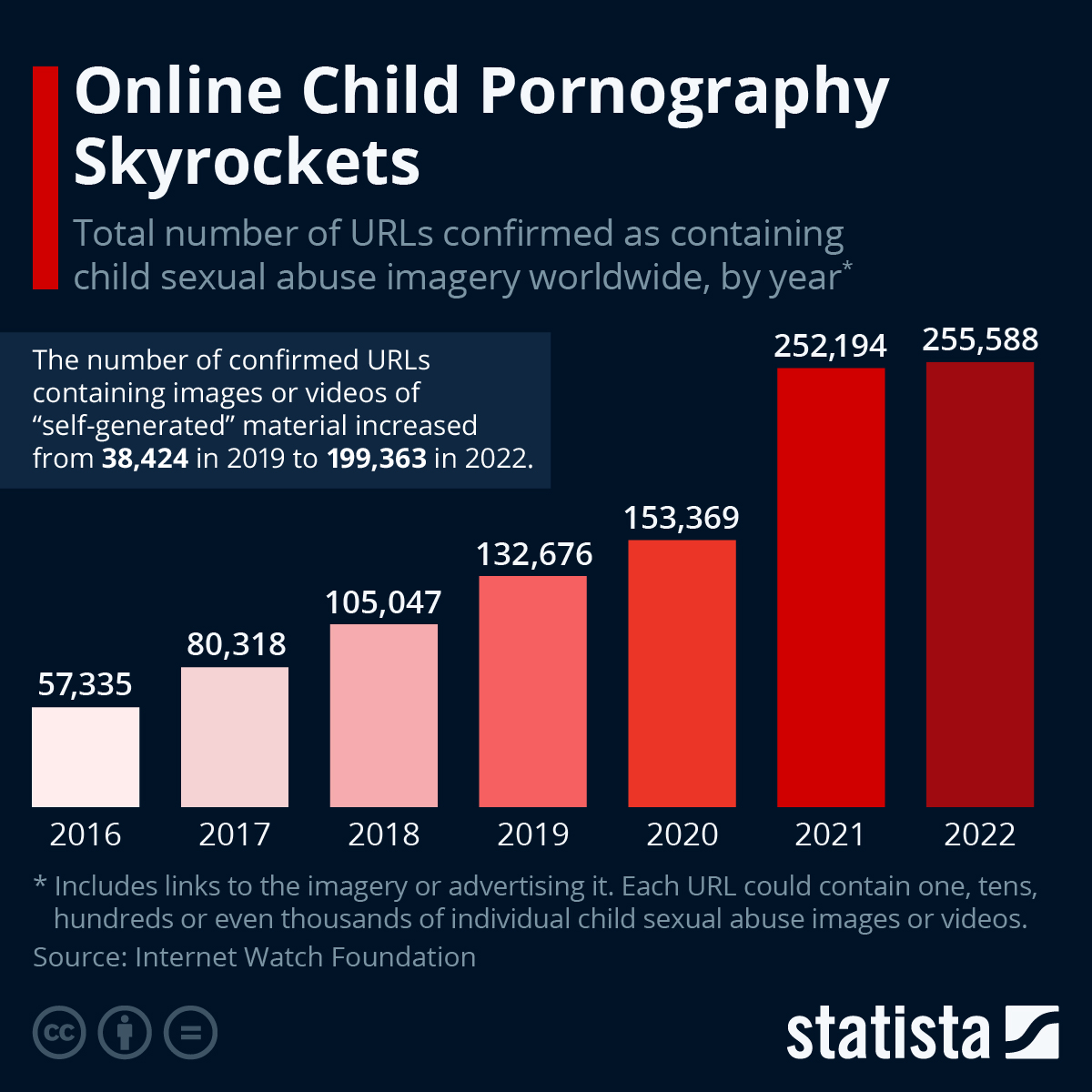
The amount of online child sexual abuse has skyrocketed in the past few years, according to the latest annual report of the UK-based NGO and watchdog, the Internet Watch Foundation (IWF). As many as 255,588 URLs were confirmed to contain images or videos of the abuse last year, up from 132,676 URLs in 2019.
As Statista's Anna Fleck reports, this rise is partly being linked to the pandemic, when lockdowns meant more people - including younger children - were staying at home and turning online for longer periods of time than before. According to child safety experts, this increased exposure could have left them more vulnerable to communities of criminals looking to find and manipulate children into recording their own sexual abuse on camera.
According to the report, “self-generated” content has become particularly prevalent in this time, with the number of confirmed URLs containing images or videos of “self-generated” material rising from 38,424 confirmed cases in 2019 to 199,363 in 2022.
This is where children have been groomed and coerced into taking the images without the abuser present in the room, which have then been put online.
You will find more infographics at Statista
These images are most often taken at home, in a child’s bedroom or a bathroom.
The IWF notes that the term “self-generated” child sexual abuse is limited in that it does not fully encompass the full range of factors often present within this imagery, and which appears to place the blame with the victim themselves. They note:
“Children are not responsible for their own sexual abuse. Until a better term is found, however, we will continue to use the term ‘self-generated’ as, within the online safety and law enforcement sectors, this is well recognised.”
Of the 255,571 web pages actioned during 2022, over three quarters (199,363 or 78 percent) were assessed as containing "self-generated" imagery.
This is a six percentage point increase on 2021 when 72 percent of actioned reports (or 182,281) were captured in this way. Girls aged 11-13 were the group that appeared most frequently in this content.
The amount of online child sexual abuse has skyrocketed in the past few years, according to the latest annual report of the UK-based NGO and watchdog, the Internet Watch Foundation (IWF). As many as 255,588 URLs were confirmed to contain images or videos of the abuse last year, up from 132,676 URLs in 2019.
As Statista’s Anna Fleck reports, this rise is partly being linked to the pandemic, when lockdowns meant more people – including younger children – were staying at home and turning online for longer periods of time than before. According to child safety experts, this increased exposure could have left them more vulnerable to communities of criminals looking to find and manipulate children into recording their own sexual abuse on camera.
According to the report, “self-generated” content has become particularly prevalent in this time, with the number of confirmed URLs containing images or videos of “self-generated” material rising from 38,424 confirmed cases in 2019 to 199,363 in 2022.
This is where children have been groomed and coerced into taking the images without the abuser present in the room, which have then been put online.
You will find more infographics at Statista
These images are most often taken at home, in a child’s bedroom or a bathroom.
The IWF notes that the term “self-generated” child sexual abuse is limited in that it does not fully encompass the full range of factors often present within this imagery, and which appears to place the blame with the victim themselves. They note:
“Children are not responsible for their own sexual abuse. Until a better term is found, however, we will continue to use the term ‘self-generated’ as, within the online safety and law enforcement sectors, this is well recognised.”
Of the 255,571 web pages actioned during 2022, over three quarters (199,363 or 78 percent) were assessed as containing “self-generated” imagery.
This is a six percentage point increase on 2021 when 72 percent of actioned reports (or 182,281) were captured in this way. Girls aged 11-13 were the group that appeared most frequently in this content.
Loading…





